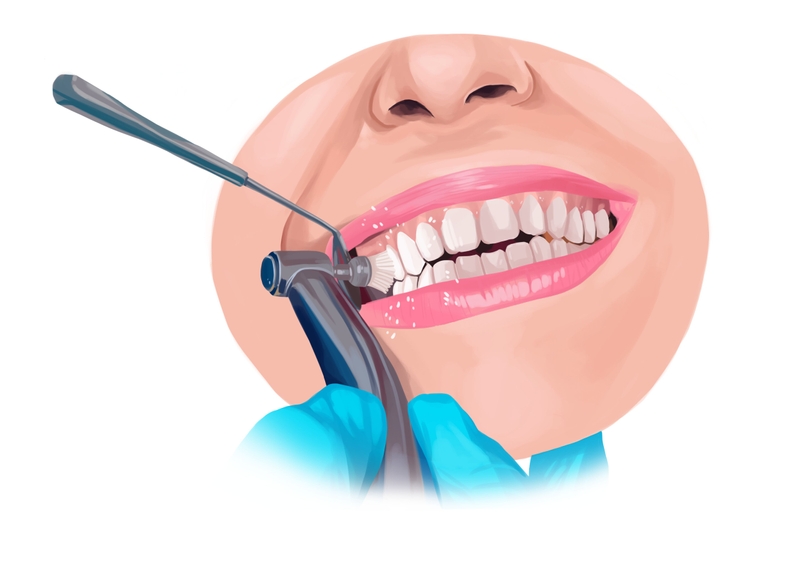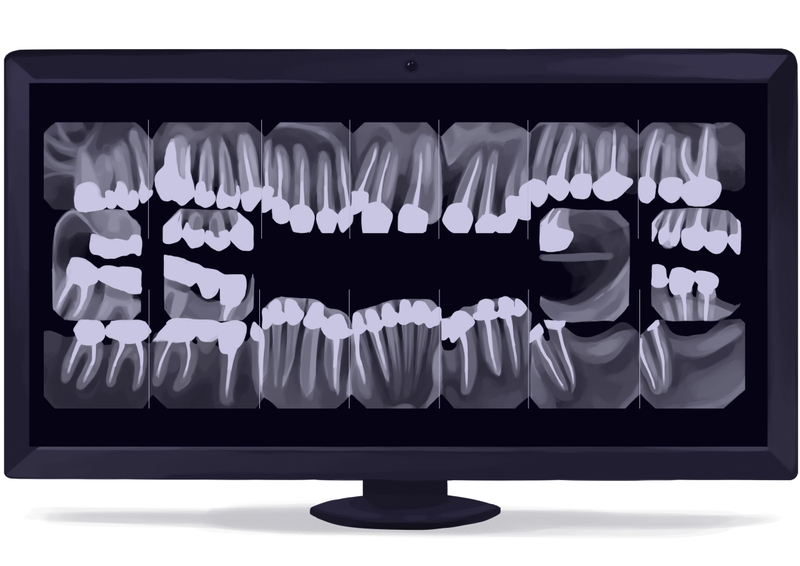- The cost of a dental cleaning is relatively inexpensive. The average cost ranges from $70 to $250 for adults and $50 to $150 for children.
- You may need additional procedures such as X-rays, fluoride varnish and gum irrigation. These will increase the final price.
- Ideally, you should have your teeth professionally cleaned twice a year.
Need a dental cleaning at a good price? Use Authority Dental to book an affordable dentist near you. More than 1,500 locations available.
Are you wondering what is the cost of professional dental cleaning? Here's everything you need to know.
Average cost of dental cleaning

Picture by Authority Dental under CC 2.0 license
Dental cleaning, or “prophylaxis” is differentiated in terms of price mainly by the age of the patient.
| PROPHYLAXIS TYPE | AVERAGE COST | COST RANGE |
|---|---|---|
| For adults | $100 | $70-$250 |
| For children | $80 | $50-$150 |
A typical teeth cleaning for children is usually more affordable. Children’s cleaning might also include scaling and polishing within the dental insurance policy. Some dental offices will deem children over the age of 14 adults and charge them correspondingly. This is because it is around this age that all adult teeth appear in the mouth.
It doesn’t matter how strict your oral hygiene routine is or how often your routine cleanings take place. Plaque will always build up, and home methods may be ineffective, no matter if you have deciduous or permanent teeth. That is why you will need to make sure to set a dental cleaning appointment with your dentist one to two times a year for a professional cleaning and plaque removal.
Doing this consistently can help prevent the need for more expensive medical procedures. Cosmetic treatments such as teeth whitening can also be avoided, since teeth cleaning helps to remove stains.
Associated costs

Picture by Authority Dental under CC 2.0 license
To determine how deep the cleaning should be you will need an X-ray. If you refuse to have it, some dental hygienists might agree to perform a simple cleaning anyway, but it won’t be as comprehensive.
| PROCEDURE | AVERAGE COST | COST RANGE |
|---|---|---|
| Full-mouth debridement | $200 | $150-$300 |
| Dental exam | $100 | $50-$200 |
| Bitewing X-ray | $35 | $25-$50 |
| Periapical X-ray | $35 | $25-$50 |
| FMX | $150 | $150-$300 |
| Panoramic X-ray | $130 | $100-$250 |
| Fluoride varnish | $50 | $35-$90 |
| Gingival irrigation | $40 | $10-$150 |
Regardless, some of the procedures listed below should be done regularly, just like dental cleaning. It is a good idea to do those things at once, to avoid multiple visits to the dentist.
Full-mouth debridement
Full mouth debridement is often confused with regular cleaning. These procedures are, however, not the same thing. An FMD helps diagnose what is going on inside your mouth. A regular cleaning does not.
Symptoms of needing this procedure are highly inflamed or swollen gums, gum disease and tough, hardened tartar on the surface of the teeth. It is performed when there is so much build up on the teeth that the dentist can’t see them well enough to make a diagnosis.
Any other procedures that need to be performed will be scheduled four to six weeks later. During that time you will have to follow the hygienists’ instructions vis a vis oral hygiene. This will also give your gums time to heal.
Oral evaluation
It is a good idea to schedule an exam before a cleaning per say, as it may turn out you need a debridement before you can have a cleaning. What’s more, a prophy cannot be legally performed if the dentist has never done an exam on the patient. You can consider an evaluation a part of the cost of a cleaning.
The dentist will assess the state of your mouth and explain what procedures you should schedule. You can also ask any questions you have, be it medical or financial, at this time.
If your dentist suspects periodontal disease, a periodontal probing may be performed. This means he or she measures your gum pockets to determine gum health.
The price range for this procedure is quite big for a number of reasons. It will be slightly cheaper (around $50) for returning patients, as they are expected to have good overall oral hygiene. For new patients, or patients who have not been to the dentist for a while, the average price is about $150.
Dental X-rays
The cost of dental X-rays might be something you have to think about before a cleaning. Your dentist might want to check for decay happening from the inside or between your teeth. Insurance providers might also require an X-ray as evidence that the procedure was necessary.
This can indicate that a scaling and root planing is also necessary. He or she might also want to inspect the roots for abnormalities.
The types of X-rays you can expect to have before your cleaning:
a bitewing (the most common case),
a periapical radiograph,
an FMX, or
a panoramic radiograph.
Fluoride varnish
The goal of a fluoride varnish is to prevent decay, remineralize the teeth, and target hypersensitivity. This treatment can be performed by a dentist or a dental hygienist.
You don’t have to abstain from eating for twenty-four hours. You can eat straight away, but avoid hot, hard, sticky foods and alcohol for the rest of the day. Your dentist might also advise you not to brush that night but wait until the next morning. Some fluoride treatments require you not to eat or drink for 30 minutes.
There are different flavors of the paste, which is great when this procedure is done on children. Unlike fluoride carriers, a fluoride varnish at the office does not involve trays. This is a great solution for those with a strong gag reflex.
Gingival irrigation
This procedure is charged by quadrants. If you want your whole mouth done, multiply the quote above by four.
Simple brushing and flossing is not enough to keep your teeth clean. The purpose of gingival irrigation is to remove food debris. If you suffer from halitosis (bad breath) this procedure might be appropriate.
A stream of medicated water will hit the problem areas, allowing the gum pockets to get smaller. This removes a significant amount of hiding place for bacteria and improves the overall health of your mouth. You could compare this procedure to flossing with water.
Does insurance cover dental cleaning?

Picture by Authority Dental under CC 2.0 license
Depending on the policy you have, up to two cleanings per year are fully covered.
The good news is that an exam and X-rays can also be compensated for by your policy if you are a new patient. It may even be covered for returning patients, but it has to be considered necessary.
If you require more than two visits per year (e.g. you are a smoker) you will have to reach out to your insurance provider and see whether anything can be done.
Dental discount plans, on the other hand, are sure to cover any cleaning you may need. This is the option we recommend. Plans are similar to a membership. You pay a regular fee, monthly or yearly, and get discounts on all dental procedures, medically necessary or cosmetic.
There is no paperwork or yearly maximums. You can get reductions from 10% up to 60% on any procedure the day you sign up. The only requirement is that you need to visit an in-network dentist. That’s the case with some insurance provided as well, though.
FAQ
Can I get my teeth cleaned for free?
If you are insured, your cleaning will be covered by your provider in full with no deductible.
Some dental and hygienist schools offer free cleanings. You will have to do your research to find such an opportunity in your area. The downside is that it may take longer than usually. Patients quote having the procedure take over 4 hours.
Is cleaning teeth a necessary expense?
The ADA recommends having your teeth cleaned at least once a year. Some studies link neglect of dental hygiene to heart conditions and diabetes. Prophylactic cleanings are important for both your oral and general health.
What’s more, this procedure can help prevent more expensive ones such as fillings and root canal treatments.
Namrita Harchandani, DMD
Most insured patients are used to coming in for a six-month hygiene appointment and recall exam. Among those who pay out-of-pocket the attendance is slightly lower, but I would say a good deal of those patients still do come in regularly.